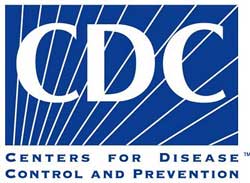The Centers for Disease Control and Prevention (CDC) released a study of 11 years of food poisoning outbreaks this week. The report claims that produce in general and leafy greens in particular cause more food poisoning outbreaks than other foods. But did the CDC give veggies a bum rap?
 On Tuesday, the CDC issued an early release of a report appearing in the March 2013 edition of Emerging Infectious Disease entitled: “Attribution of Foodborne Illnesses, Hospitalizations, and Deaths to Food Commodities by using Outbreak Data, United States, 1998–2008.” The study looked at foodborne illness outbreaks from 1998–2008.
On Tuesday, the CDC issued an early release of a report appearing in the March 2013 edition of Emerging Infectious Disease entitled: “Attribution of Foodborne Illnesses, Hospitalizations, and Deaths to Food Commodities by using Outbreak Data, United States, 1998–2008.” The study looked at foodborne illness outbreaks from 1998–2008.
Of the 13,352 food poisoning outbreaks that occurred during this time, the specific food source was only identified in 37 percent of them or 4,887 outbreaks. These were divided into 17 food categories: fish, crustaceans, mollusks, dairy, eggs, beef, game, pork, poultry, grains-beans; oils-sugars [refined plant foods]; fruits-nuts; fungi; leafy; root; sprout; and vine-stalk vegetables. For almost half of the 4,887 outbreaks, the “implicated food vehicle” contained ingredients from two or more of these categories. Apple pie, for example, would likely have grains, fruits, oils-sugars and dairy. “For each complex food outbreak, we partitioned the associated illnesses to the multiple implicated commodities in proportion to the relative numbers of illnesses in all simple food outbreaks that implicated those specific commodities.”
Leafy vegetables accounted for 23 percent of all illnesses, dairy for 14 percent, fruits-nuts 12 percent and poultry 10 percent, according to the report. All produce categories combined (fruits-nuts and the 5 vegetable commodities) accounted for 46 percent of illnesses, followed by meat and poultry commodities with 22 percent.
The combined produce category accounted for 38 percent of hospitalizations followed by meat-poultry commodities for with 22 percent, according to the report. Dairy led the single commodities hospitalization rate with 16 percent, followed by leafy greens with 14 percent of outbreak-related hospitalizations, poultry with 12 percent and fruits-nuts with 10 percent. Most deaths, 43 percent, were attributed to land animals, plants accounted for 25 percent of food poisoning deaths and 6 percent were attributed to aquatic animals.
The report also breaks things down into four broad groups of contaminants bacteria, chemical, parasitic and viral which are also broken down into subgroups. About 60 percent of the 4,587 outbreaks attributed to produce were caused by norovirus. And viruses as a category accounted for about 60 percent of illnesses attributed to produce.
“Unfortunately, this report leaves out some very important details about the causes of foodborne illnesses, specifically how and where pathogens are introduced into the food supply,” Scott Horsfall, CEO of California Leafy Greens Marketing Agreement (LGMA) said in a statement on the organization’s website this week. “Because many produce items, particularly leafy greens, are eaten in their raw form, it is extremely important that safe handling is practiced throughout the supply chain,” Horsfall said. Norovirus is “‘almost always spread via food handling after the produce leaves the farm,” he said.




